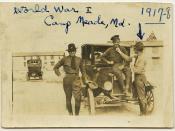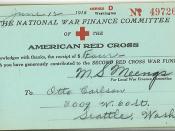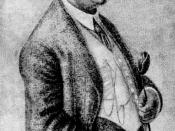The 1920s became a time of real cultural creativity, with developments in art, films, and many more areas.
Otto Dix, Kathe Kollwitz, and George Grosz are three well-know artists at that time. They were considered as artists of social criticism and their art reflected the chaos after WWI. At the time, many people supported their art works because their art responded to the current chaotic conditions and criticized the government and society. And because their works were printed and produced cheaply, they were able to reach a wide range of audience.
Otto Dix was a student at the Dresden school of Arts and Craft. After coming back from the war in 1918, Otto Dix became a left-winger and his left-wing views were all reflected in his art. He was angry about how badly the ex-soldiers were treated, and his anguish was expressed in his art works such as War Cripples (1920), Butcher's Shop (1920) and War Wounded (1922).
Having been deeply affected by WWI, Otto Dix was very against war. His painting, The Trench, and his book of etchings showed strong anti-war statements.
Karthe Kollwitz, born in 1867, attended the School for Woman Artists in Berlin. Similarly, Kollwitz was also deeply affected by the war because her son Peter was killed during WWI. Afterwards, she had devoted most of her time in producing artworks that showed the impact of war on woman. And her works also promoted the ideas of Pacifism.
George Grosz was famous for his prints that showed the ugliness of the society and culture of Berlin. In Weimar republic, artworks like his made the government angry. Grosz was taken to court several times for his criticism of the society, but he always managed to escape imprisonment by paying a large amount of fines. Grosz joined with...


